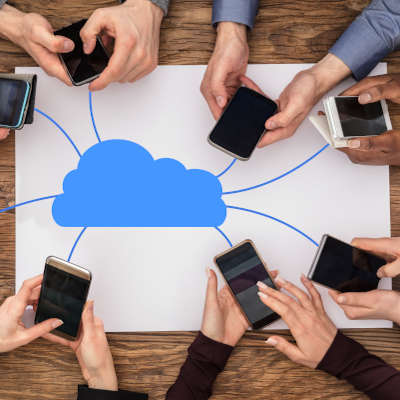As the workers that power many businesses are remaining at home, remote solutions have proven to be a significant tool in keeping productivity moving. However, with nobody going into the office, monitoring your IT environment is necessary to make sure that the infrastructure you depend on is still in the right conditions. For this week’s tip, we’ll discuss some best practices to help you do so.
The world has been turned on its head recently and it has forced the hands of many business owners to make a complete digital transformation of their business. Many businesses have made this transformation previously, but haven’t completely worked out the logistics of it when the stay-at-home orders came down due to the COVID-19 pandemic. Today we will look at four elements of a digital transformation that are extremely useful for your business.
Collaboration has always been key to the success of businesses, and with the cloud technologies now available, collaboration is possible in more ways than ever. COVID-19 has made business connectivity more important than ever, so we saw it fitting to recognize some of the cloud’s collaboration options. They come in a few distinct flavors:
Microsoft’s latest Security Intelligence Report cites phishing attacks as the most prevalent cyberthreat. With the COVID-19 outbreak pushing large numbers of workers to their own homes, it is almost assuredly still the case. As a result, it is extremely important that you and your staff understand how to spot potential phishing attacks and what to do when confronted with an attack. Today, we will provide you some tips on how to identify and remediate such attacks.
When a budget comes into play, it is important to remember that there are a few ways that you can adjust it beyond eliminating line items. For instance, you can instead optimize some of the most egregious financial requirements your technology has–its support costs–by translating the unpredictably variable costs you likely deal with now for your support, to the much more sustainable agreement that a managed service provider will operate through.
The COVID-19 pandemic has most of the world at home. It has completely disrupted everyday life and has businesses scrapping their normal strategies for work-at-home policies that will at least allow them to maintain some productivity. These strategies, while highly effective, carry with them additional risk. Today, we take a look at some of the risks associated with relying on remote workers.
As the COVID-19 pandemic rages on, affecting hundreds of thousands of people, and keeping hundreds of millions at home, the beginnings of recessionary fear have begun to hit small businesses. Today, we will go through a few elements that will help you get your business through this (and many other) anxious times.
The COVID-19 outbreak has a lot of business owners looking over their supply chains and their budgets wondering how they are ever going to make things work. If yours is like most businesses, you use IT to make your business smarter, more efficient, and help your workforce be more productive. Unfortunately, with recessionary winds swirling around as a result of this terrible situation, it may become inevitable that your business will have to do more with less for some time.
The cloud is an undeniably useful technology to implement in your business’ processes, and is a very popular option as a foreseeable result. This does not mean, however, that the cloud isn’t subject to some risks. Let’s go over a few risks the cloud presents, and how you can mitigate them by selecting the right provider.
It is pretty apparent that there are a lot (a lot) of acronyms used when discussing IT. In fact, that itself is an acronym for information technology. They can all get pretty confusing if you don’t necessarily think about these things every day. Considering this, we’ve put together a list of terms for you to know that we think may be handy to have.
- 1
- 2










